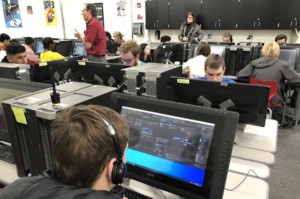K12 Insight Facilitating District Customer Service

The average urban superintendent lasts three years in a given district. Let that sink in for a moment. The average CEO stays in their job for close to 10 years.
For an organization as large, complex and slow-moving as a school district, three years will rarely be enough to affect positive, meaningful change. At the same time, we at Getting Smart wholeheartedly believe that positive change is the genuine goal of most superintendents.
So why don’t they stay longer? Often, it’s largely a result of politics.
This can take the form of “D.C.-style politics,” but it can also be politics in the more original, greek sense of the word, which is more focused on issues and challenges related to the actual act of governing and leading a community.
For example, what happens when a parent has a negative interaction with an administrator in a district’s central office? Are they able to get in touch with the right person to file a concern or complaint? More often than not, they aren’t. So, rather than resolving their issue, they complain to their friends (who likely also have children in the district), and slowly but surely, as these instances multiply, confidence in and support for district leadership drains away.
This is the specific challenge that K12 Insight is seeking to address. I recently spoke with their CEO, Suhail Farooqui, to learn more about their approach.

With school choice on the rise, K12 Insight asked parents in over a dozen districts with declining enrollment what the top reasons were for leaving their local public school. They found that the #2 reason that parents opt for a school other than their standard public option is that they were looking for a special program (such as robotics, bilingual education, etc.). The #1 reason is that the parent has felt disrespected by the administration.
“This is an issue for district morale and leadership reputation, but it poses a financial problem as well,” said Farooqui.
Richmond County School System, for example, loses about $5000 of funding for every student that stops attending a school in their district. On top of that, in the traditional district organizational structure, if you upset a student then their parent calls the board, which calls the superintendent, all of which wastes valuable time.
To rethink their approach to community communication, Farooqui suggests that superintendents ask themselves three questions:
- How easy is it for people with questions or concerns to find the person they need?
- How long does it take for that person to receive a response?
- How likely is it that your responses will be accurate and courteous?
Unfortunately, in a medium or large district where there can be administrative staff numbering in the hundreds, organizing a structure to effectively optimize for these questions can be difficult or impossible. At the very least, it would be time-consuming enough to distract from innovations in actual learner experiences, which in most cases should be a higher priority.
K12 Insight is working to facilitate change both by enabling more effective inbound communication from community stakeholders and more effective organization around responses from district and school officials.
On the inbound side, they’ve created an easy-to-implement website plugin that will give visitors a convenient way to send a message to the district (see Fort Bend ISD for an example of what that looks like). On the district, back-end process side of things, they’ve developed a dashboard which allows for collaboration and communication between administrators.
 When families submit a question, it creates a “ticket” within the system, which provides a number of functions. For simple issues such as school closures due to snow, it enables mass, personalized mail-merged responses.
When families submit a question, it creates a “ticket” within the system, which provides a number of functions. For simple issues such as school closures due to snow, it enables mass, personalized mail-merged responses.
For more complicated issues, each ticket opens up a sort of “project management dashboard” that allows all relevant team members to collaborate over priority, record their interactions in a running action log and view the customer’s history of interactions with the district. The system also uses intelligent message analysis to send push notifications to administrators’ phones if certain high-priority messages come in.
The dashboard also includes a social media monitoring tool a-la Hootsuite, which allows district staff to track mentions of the district across social media channels.

According to Farooqui, larger districts typically see upwards of 3500-4000 inquiries in the first year, then more as parents discover how easy it is for them to get in touch. Moreover, as it is designed to support multi-lingual districts at every step in the process, it can be a great tool for equitable family engagement.
For superintendents looking to make their family engagement and communication move more smoothly through better customer experience and free up valuable time for updating the learner experiences in their district, K12 Insight’s approach is an interesting tool.
For more, see:
- How to Reduce Barriers to Family Engagement
- 5 Ways Teachers Can Get Parents Involved Beyond Homework
- The First Step in Engaging Parents is Getting to Know Them
Stay in-the-know with all things EdTech and innovations in learning by signing up to receive the weekly Smart Update.







0 Comments
Leave a Comment
Your email address will not be published. All fields are required.